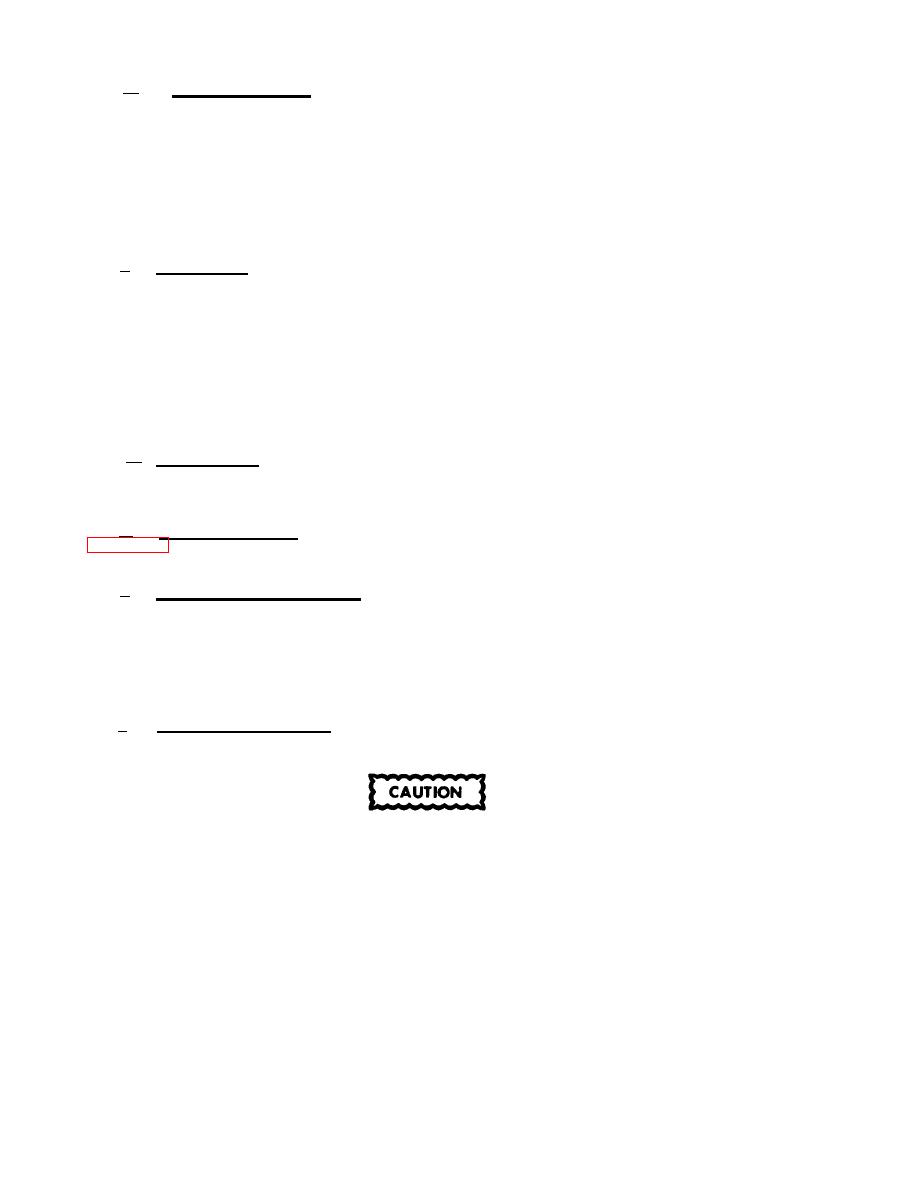 |
|||
|
|
|||
|
|
|||
| ||||||||||
|
|
 TM 5-4120-369-14
The vent adjusting knob controls the flow of ventilation air
e. Vent Adjusting Knob.
into the unit. The knob is connected by the damper cable to a damper located in the vent duct.
The knob controls the flow of ventilation air by adjusting the position of the damper from full
closed to full open. Turning the knob upward closes the damper, turning the knob downward
opens the damper. The force that draws ventilation air into the unit is the small pressure
difference between the ambient and the evaporator fan. This is the same small pressure differ-
ence that exists between the conditioned space and the evaporator fan; the pressure difference
that draws return air through the inlet louver and the return air filter. When ventilation air
enters the conditioned space a like flow of air must exhaust from the space to prevent a pressure
build-up . Cracks in the space may be sufficient; but if a large flow of ventilation air is desired,
some positive means of air exhaust should be provided.
Inlet Louver. The inlet louver is finger-adjustable from full open to full closed.
f.
Normally the louver shutter tab adjustment is kept at 45 position, which is essentially the same
as a full open inlet louver. If the inlet louver is closed, return air will still manage to flow
through it; but at a reduced rate with high pressure drop. The increase in pressure drop will
cause additional ventilation air to be drawn into the unit. The "vent" mode of operation is
normally the only mode where closing the inlet louver (to create increased ventilation airflow)
would be considered a real advantage. Sufficient ventilation air flow for other modes of operation
can be achieved with the inlet louver open and the damper open. The return air filter is attached
to the back side of the inlet louver. A dirty filter can easily be observed by looking through the
inlet louver blades. Since maximum cooling capability of the unit is obtained with maximum
evaporator air flow, a closed inlet louver or a dirty air filter will decrease cooling capacity, and
may cause ice to form on the evaporator coil.
g. Outlet Louver. The out let louver is finger-adjustable in both horizontal and vertical
planes. This adjustment on an individual blade basis allows maximum control over the
direction of outlet air. The best distribution pattern for outlet air is the operator's judgement;
but blades should not be adjusted beyond 45, as evaporator air flow will be impeded.
Condenser Louvers. The condenser louvers, located on the rear of the air conditioner
h.
condenser louvers cannot be manually opened and closed.
Compressor Circuit Breaker. The compressor circuit breaker is a safety device which
i.
provides overcurrent protection for the compressor. The compressor circuit breaker is not a
control switch to be used for operating the unit. This breaker should always be kept in the ON
position, a defective compressor will cause circuit breaker to trip. The unit control circuit is
also connected to auxiliary contacts on the compressor circuit breaker. When this circuit breaker
trips to OFF, it disconnects the control circuit allowing the time delay relay to reset and the
refrigerant system pressures to equalize. Manually resetting the compressor circuit breaker to
ON restores electrical continuity.
Control Circuit Breaker. The control circuit breaker is
j.
a safety device which provides overcurrent protection for the control
circuit of the unit.
The control circuit breaker is not a control switch to be used for
operating the unit. This breaker should always be maintained in
the ON position. If the breaker trips to the OFF position, an
electrical defect in the control circuit is indicated and corrective
act ion should be taken. Manually resetting the circuit breaker
to ON restores electrical continuity.
2-4
|
|
Privacy Statement - Press Release - Copyright Information. - Contact Us |